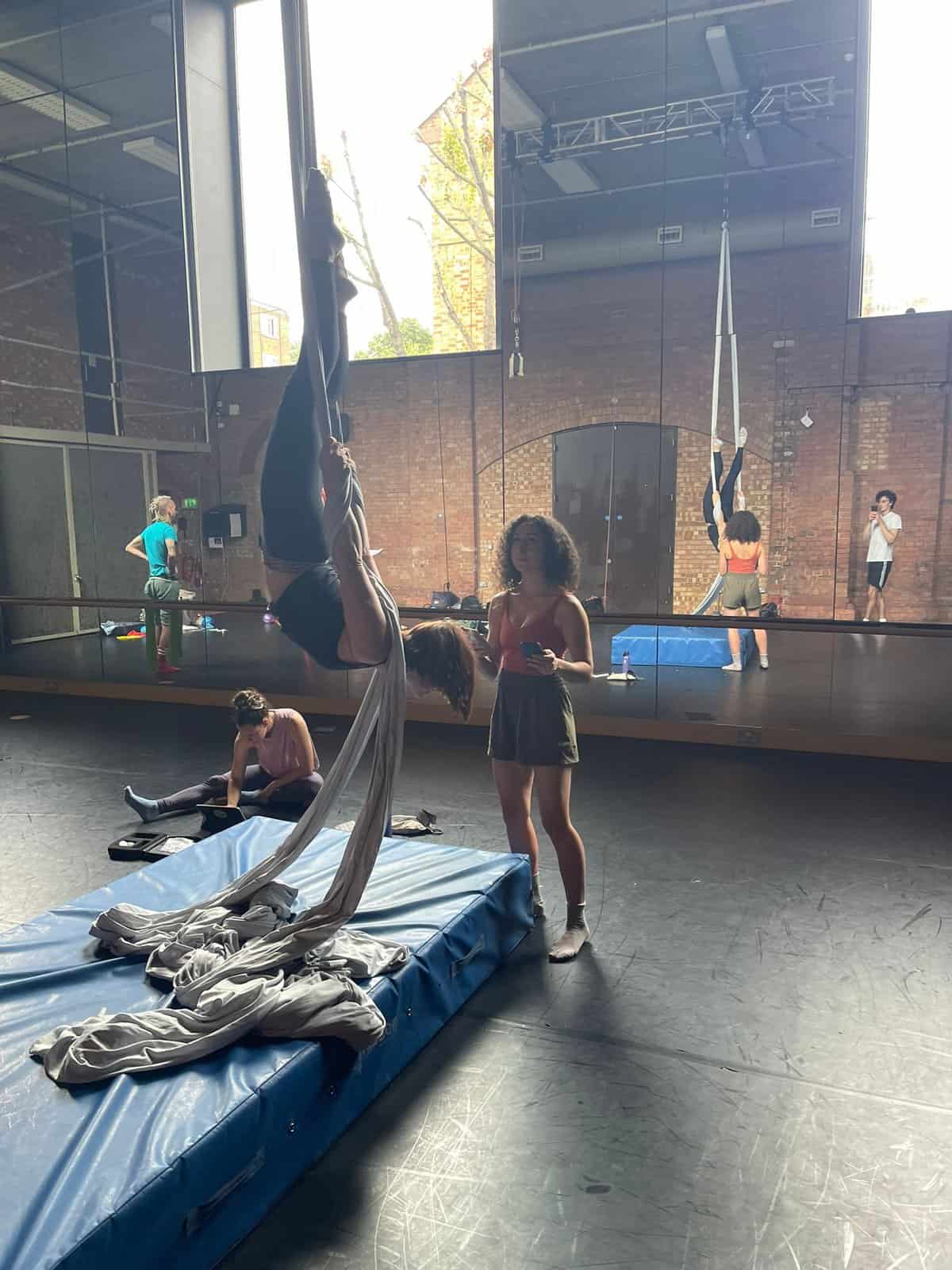Pilates for Aerialists: My Research on Deep Abdominal Engagement in Circus Artists
2024 has been an exciting and challenging year for so many reasons! One of these reasons points to the original EMG (electromyography) research I conducted on the effect of Pilates on deep abdominal recruitment in circus artists. After spending months recruiting aerialists from different corners of the UK, 8 professional and recreational aerialists and acrobats joined my study. In this blog, I’m revealing the short version of my findings.
All of my hypotheses pointed to Pilates helping to increase deep abdominal engagement in the various orientations of the spine (explained in more detail below).
Blog Guide
- What is Electromyography (EMG) and how does it measure deep abdominal strength?
- Study Method: What was expected of my participants?
- Study Outcomes: Did Pilates Change the Deep Abdominal Engagement of Aerialists and Acrobats?
- What now? Should Aerialists and Acrobats Implement Pilates Long Term into their Routines?
- Conclusion: My Research on Deep Admonial Engagement in Circus Artists
What is Electromyography and how does it measure deep abdominal strength?
EMG studies are known to have the ability to identify the recruitment of deeper muscles. Electromyography is specific in that it measures the electrical response of a skeletal muscular nerve in response to change or stimulus. While some research exists to study the recruitment of deep abdominals on an unsteady surface, no research up until now existed to uncover deep abdominal recruitment while the spine is in an inverted state, providing the perfect opportunity for my research!
If you’re trying to picture an EMG study, think about TENS unit pads being placed in between the hip crests. This is exactly how I measured the deep abdominal contractions of the transversus abdominus (our deepest core muscle).
Study Method: What was expected of my participants?
Over 5 weeks, the study participants were expected to upkeep three thirty-minute solo Pilates sessions and attend one virtually streamed or in-person Pilates class. The focus of each session was Pilates breath education with a huge emphasis on pelvic floor recruitment, as well as deep abdominal recruitment from supine, side lying and quadruped positions.
On week 1, prior to Pilates sessions commencing, I gathered the EMG data on each participant’s TrA (transversus abdominus) recruitment in 5 different inversion variations including what I have referenced as the “neutral spine” of an inversion (just a straight up and down pencil), spinal extension (otherwise called bird cage), spinal compression (otherwise called pike) and inverted lateral flexion from side to side (a supported “meat hook” variation).
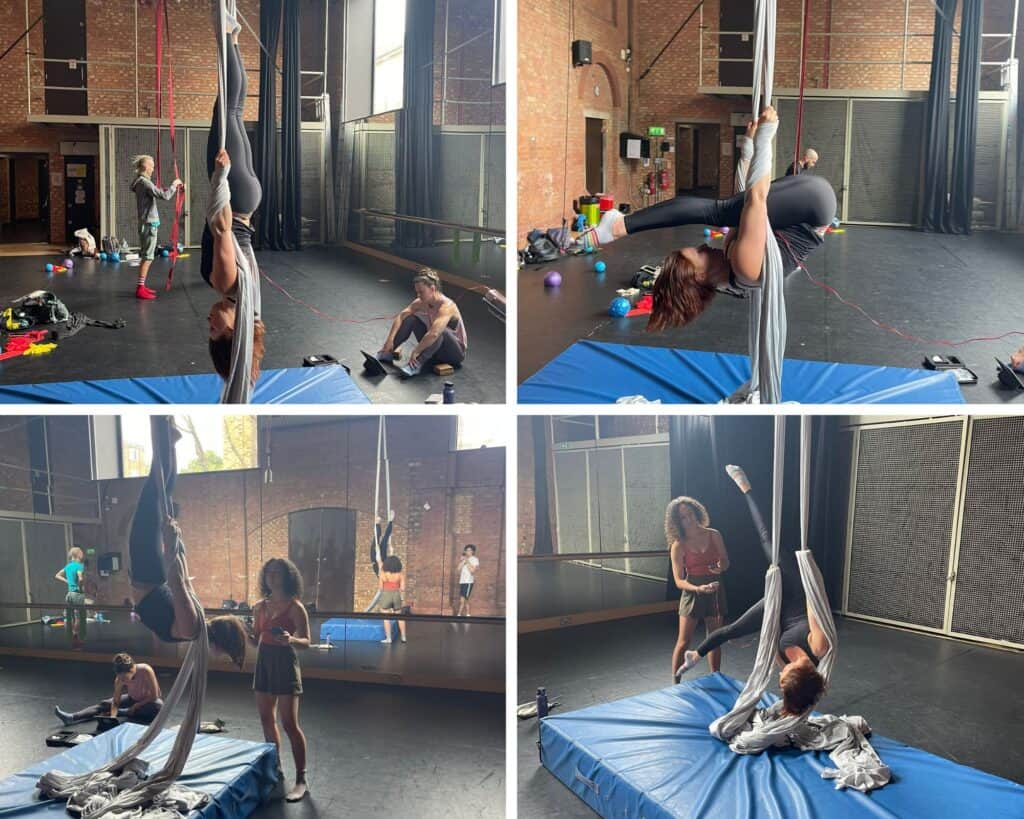
The same data was collected on Week 3, as well as on the final reading on Week 5.
Study Outcomes: Did Pilates change the deep abdominal engagement of aerialists and acrobats?
To make a long story short, yes! Pilates did change the deep abdominal output of the circus artists in my study. However, the only “statistically significant” difference that I found in deep abdominal output after 5 weeks of Pilates sessions was with “inverted left side flexion” or a “meat hook” towards the left.
The other aerial shapes that showed somewhat of a meaningful increase on the EMG readings were spinal extension (bird cage), which doubled in output and inverted spinal lateral flexion to the right.
Inversions only increased subtly and spinal compression didn’t really increase at all. My chart below gives you a little more nerdy insight.

What now? Should Aerialists and Acrobats Implement Pilates Long Term into their Routines?
My conclusion and discussion went into depth on explaining why further study and a larger participant pool is warranted. Pilates has proven to be exceptionally beneficial in increasing strength and prevent injury in dancers (who remain on the ground). I’ll be interested to follow future studies that unpack the effect of Pilates on the circus population.
Regardless, absolutely yes! Aerialists and acrobats should implement Pilates into their warm up routines, as well as a complement to their existing self care movement schedule. I recommend 2-3 30 minute to 45 minute sessions for optimal results.
Conclusion: My Research on Deep Admonial Engagement in Circus Artists
It was such an honor to study this population! If you happen to be an aerialist/ acrobat and are interested in incorporating Pilates into your routine, I have customised online Pilates programs available just for you! Book a call to learn more.
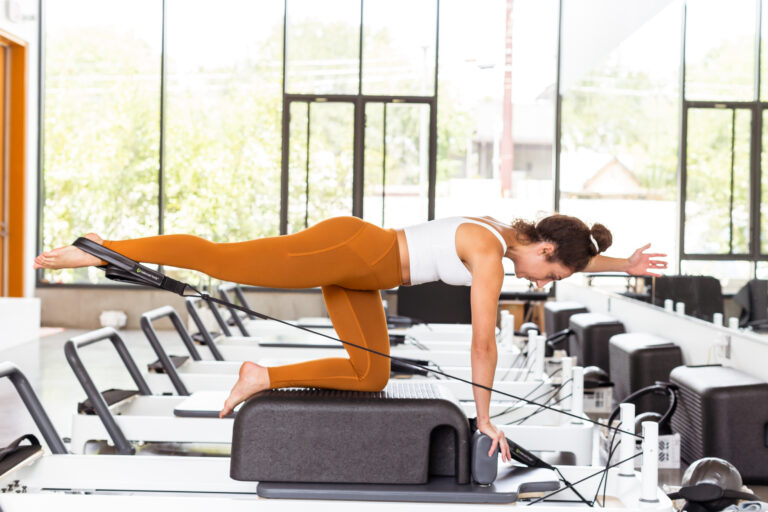
Pilates for Pelvic Floor Health
It is to my delight that talking about your pelvic floor health is becoming more popular in really any setting. Even though we can’t physically see our pelvic floors, it holds so much importance from functional strength, to urinary and fecal health, sexual health and more! Having a deeper and more connected understanding on the…
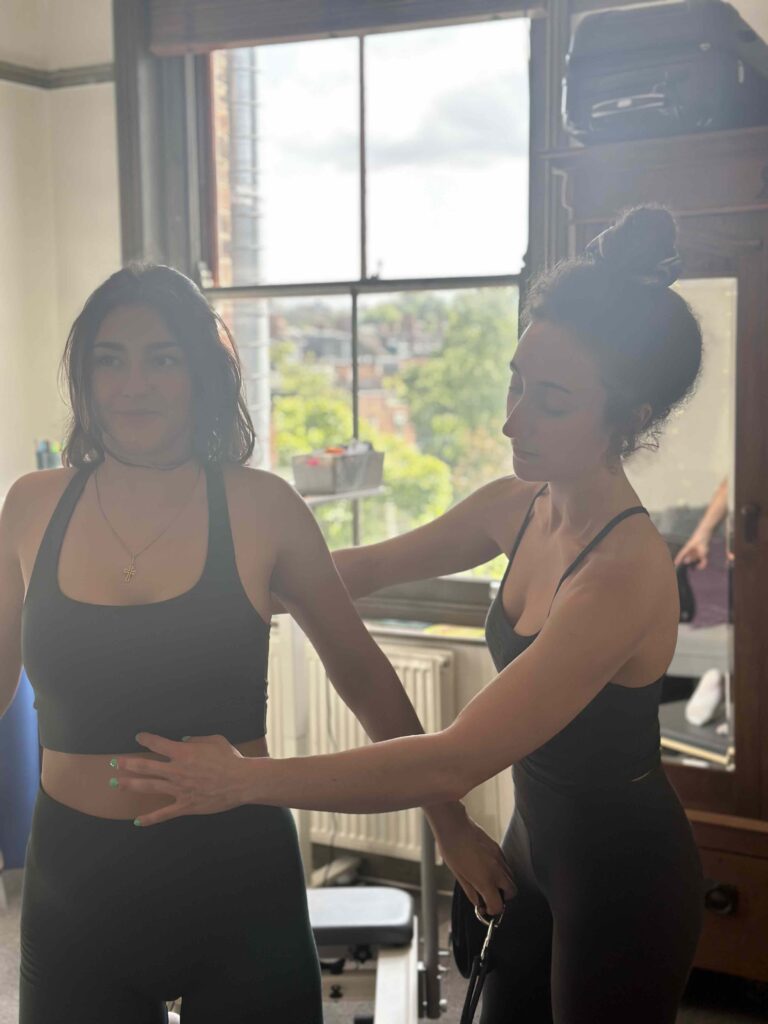
Pilates for Hypermobility
Hypermobility is a condition of the joints that affects more people than the majority of the population realizes. Several of my Pilates clients have been somewhat unaware of their hypermobility until I drew attention to it within our sessions and explained the range of motion that each joint is ideally designed to move through. If…
Pilates Body Hack: Pilates for Happy Hips
One of the first things I notice as a Pilates instructor when one of my clients lays down on the reformer for their first exercise is the natural balance of their hips in relation to their legs, low back and deep core. Tight hip flexors, weak glutes, rotated and uneven hip crests, and a tendency…
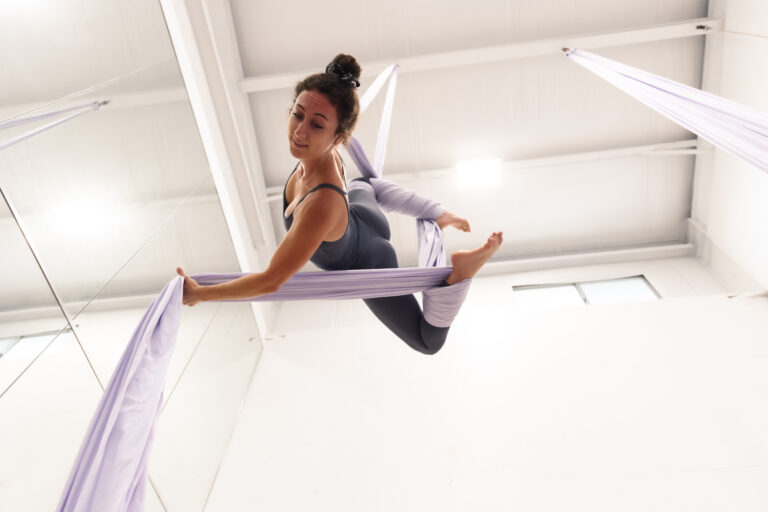
My Favorite Athletic Wear for Aerial Silks
Finding comfortable and supportive material to move in in the air can be a challenge! This blog takes you through my 5 favorite brands that I wear during my aerial silks practice. In addition to being popular, cute choices, these brands also support eco-friendly manufacturing practices, which I can get behind to support any day!…

Best Pet-Friendly Hotels in London: Where to Stay While Away with Your Pet
Finding pet-friendly housing anywhere in the world can be a challenge. Sheila and I spent a significant period of time in London last year, knowing that we would want to return this year (yay!). Some of that time was spent in a pet-friendly Airbnb, and other evenings were spent visiting the following hotels so that…
Pilates Body Hack: Pilates for Low Back Pain
Low back pain is an extremely complex issue that many people experience at least once, if not several times in one lifetime. This blog speaks to my personal experience and thorough research of my own back injury (in short, a lumbar spine disc herniation), insight I’ve gained over the years as a Pilates instructor, and…
